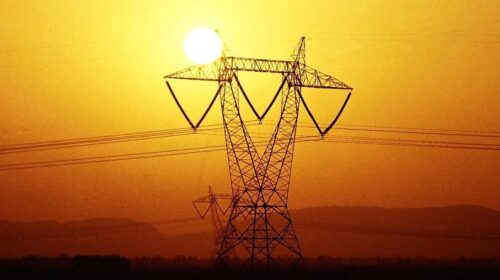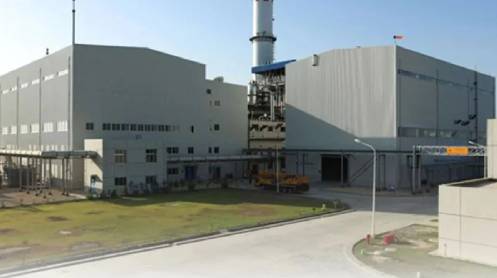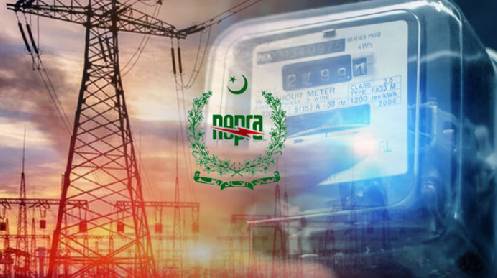High fuel prices, liquidity crunch and lesser energy supply in global chain have been hampering power generation badly, which translates into electricity loadshedding of 6-14 hours daily in various parts of the country.
According to information shared by the Prime Minister’s Office, loadshedding today is almost entirely caused by acts of omissions and commission of the previous government during 2018-22. Coupled with high and rising energy prices in the international market, Pakistan’s power sector is greatly suffering.
Consequently, power shortfall has been hovering over 7,000 MWs in the country. People are braving long power cuts across the country with power shortfall surging to 7,787 MWs. The total demand for electricity in the country is said to be 29,000 MWs and the total power generation in the country is 21,213 MWs.
In the ongoing power crisis, the natural gas-fired power plants, especially, became victim of high import price of Liquefied Natural Gas (LNG) import price and its dearth in the international market.
The present government has been facing immense hardship in sourcing LNG from the international market. Against the demand of up to 14 cargoes a month, the government has been able to source 8-12 cargoes on monthly basis, leaving a huge shortfall in LNG supplies for power generation.
In the month of April, only eight cargoes of LNG could be bought due to a variety of reasons and these all were under the long-term deal. In the months of May and June, purchase of 12 LNG cargoes have been made possible, including four and three spot purchases respectively but given the high electricity demand, power shortfall could not be bridged effectively.
During the ongoing tenure of incumbent government, spot purchasing of LNG was made for enhanced Regasified Liquefied Natural Gas (RLNG) supplies to power sector. The present government spent US$573 million on LNG spot purchases during May to June 2022.
Despite Pakistan State Oil and Pakistan LNG Ltd. facing the issue of huge receivables towards Sui Northern Gas Pipelines Ltd and power sector, the supply for power generation was made to the maximum extent possible against the demand raised. PSO’s shortfall in LNG payments as of June, 2022 is Rs285 billion whereas PLL stands at Rs119 billion receivables.
For procurement of LNG, PLL was granted exemptions from PPRA Rules on 28th May 2022 for July 2022 onward delivery cargoes. Accordingly, PLL started procurement of July 2022 cargoes after 28th May 2022, with three tenders closing in June 2022. However, due to downgrade in credit rating of the country and LC confirmation issues, participation by suppliers remained less.
To fill the gap in LNG supply, the present government gives priority to arranging liquid fuel for power generation. The Petroleum Division has been playing its role for arranging the Residual Fuel Oil (RFO) requirements as per demand placed by the Power Division. The oil industry has arranged product but actual upliftment has remained below the demand placed by the Power Division due to lesser orders placed by power plants to Oil Marketing Companies (OMCs) and payment issues.
The existing RFO stocks available with the oil industry as of June 30, 2022 were 277,000 MT, whereas two RFO cargoes of 130,000 MT are off port at present. Import of around 180,000 MT is planned for July 2022. Thus, such arrangements are sufficient to meet the demand of 436,000 MT placed by the Power Division during July 2022.
Another issue that negatively contributed in ongoing electricity shortfall crisis has been slow-paced under-construction power projects. The delay in commissioning of these projects denied Pakistan cheaper and indigenous power. Two projects namely Karot Hydro and Shanghai Thar were delayed: first on account of lack of ownership and project monitoring and the second because of failure to fulfil contractual commitments on already completed projects, thus delaying financial close. The previous government’s failure to open Revolving Account for completed projects like Sahiwal Coal and Hub Power meant no further financing for energy sector under the CPEC umbrella. The previous government either did not understand the CPEC’s energy framework or was simply out there to strangle it to slow but sure death.
The Karot Hydro having 720 MWs generation capacity should have been completed by February 2022, however, the project started power generation by July 2022. Similarly, 1,214 MW Shanghai Electric plan, which would be run with Thar Coal, would start production by May 2023 instead of planned May 2022.
Likewise, another high efficiency project namely Punjab Thermal RLNG Power Plant at Trimmu, Jhang (1,263 MW), has been delayed for more than three years by the PTI government, first due to its ill-placed enthusiasm for witch hunt through NAB and then by its deliberate delay in achieving financial close.
Had these three projects of 3,200 MWs capacity been completed in time, loadshedding in urban Pakistan would not have been witnessed despite high energy prices in the international market. Two of these do not need any imported fuel and the third is high efficiency LNG plant with more than 60 percent efficiency, which is much more feasible than plants based on imported coal or residual fuel oil.
Pakistan also has been made to buy LNG on higher prices because of the previous government’s failure to enter into long-term LNG contracts when the international LNG price was low. There has been a lack of planning to execute long term contract for purchasing RLNG. During Covid-19 (mid-2020) the RLNG prices went far lower in the international market, but that opportunity of buying RLNG at US$3 to 5 per MMBTU was not availed by the then government and no long-term contact was entered at that stage. If such a contract had been signed, consumers would have faced much lower electricity bills.
The average purchase price of the RLNG under the long-term contacts, which was signed by the PMLN government, has been at the price of US$8.02/mmbtu between 2018 to 2022 whereas during the same period on-spot average price has been US$9.44/mmbtu, despite huge price dip for two years in the same period on account of Covid. Much greater loss has been incurred during recent months wherein spot buying of RLNG has been as high as US$38/mmbtu.
The present government inherited high cost of dollar and circular debt that emerged as one of the biggest hurdles in resolving the energy crisis. The circular debt in June 2018 was Rs1,152 billion, which increased to Rs2,467 in March 2022 with an increase of 114 percent, despite major injection out of taxpayers money. One of the major causes of this rapid rise in circular debt is the depreciation of PKR value from PKR115 per dollar to PKR191 per dollar under the watch of the PTI government and under the watch of the caretaker arrangement that was put in place to bring PTI government into power.
The rise in circular debt has affected the government’s ability to pay privately-owned power plants in a timely fashion which, in turn, has piled up liabilities of coal power plants and dried their credit lines. So much so that three major power plants on coal with total capacity of 3,900 MW have such low stocks of coal that they are running on part load. In case of one coal power plant, coal is stuck at Karachi port because it has no money to clear the imported stock.
Lastly, higher energy prices in international market reduced options for the present government to meet the demand of LNG and coal out of international market. Energy prices have risen by roughly 300 percent in the last 18 months.





